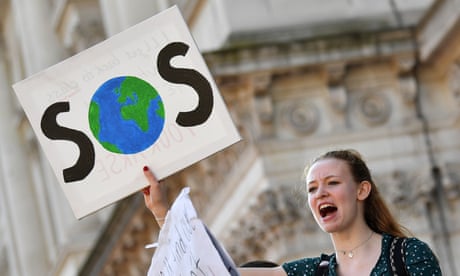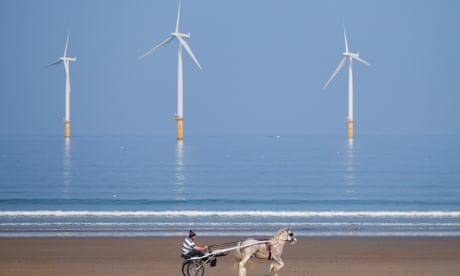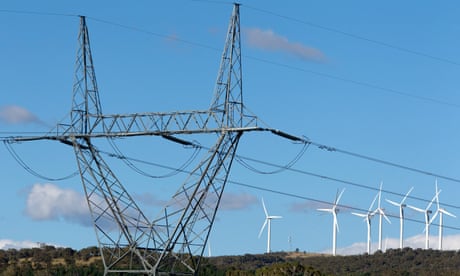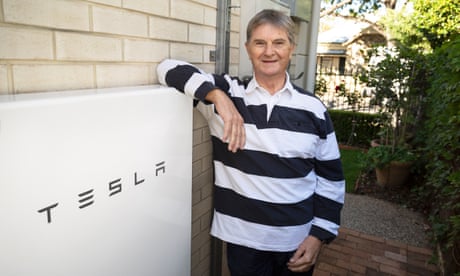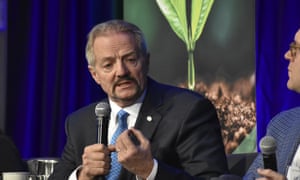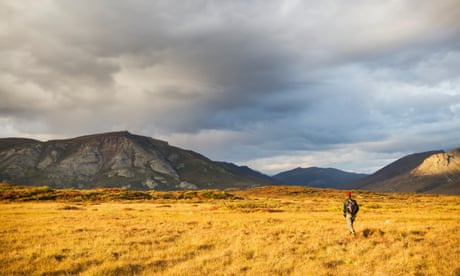Particles may outnumber zooplankton, which underpin marine life and regulate climateDamian Carrington Environment editor THE GUARDIAN
@dpcarrington Fri 22 May 2020
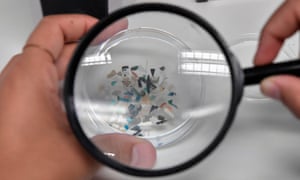
Plastic pollution is known to harm the fertility, growth and survival of marine life. Photograph: Louisa Gouliamaki/AFP via Getty Images
The abundance of microplastic pollution in the oceans is likely to have been vastly underestimated, according to research that suggests there are at least double the number of particles as previously thought.
Scientists trawled waters off the coasts of the UK and US and found many more particles using nets with a fine mesh size than when using coarser ones usually used to filter microplastics. The addition of these smaller particles to global estimates of surface microplastics increases the range from between 5tn and 50tn particles to 12tn-125tn particles, the scientists say.
Plastic pollution is known to harm the fertility, growth and survival of marine life. Smaller particles are especially concerning because they are the same size as the food eaten by zooplankton, which underpin the marine food chain and play an important role in regulating the global climate. The new data suggests there may be more microplastic particles than zooplankton in some waters.
“The estimate of marine microplastic concentration could currently be vastly underestimated,” said Prof Pennie Lindeque, of the Plymouth Marine Laboratory in the UK, who led the research.
She said there may well be even smaller particles than those caught by the fine mesh nets, meaning the numbers “could be even larger again”.
Another new study shows how microplastics have entered the food chain in rivers, with birds found to be consuming hundreds of particles a day via the aquatic insects on which they feed.
Microplastic pollution has contaminated the whole planet, from Arctic snow and mountain soils to many rivers and the deepest oceans. It is also being consumed and inhaled by people, and the health impacts are as yet unknown.
Research published in the last month has found microplastics in greater quantities than ever before on the seabed and suggested that hundreds of thousands of tonnes of microplastics could be blowing ashore on the ocean breeze every year.
The research by Lindeque’s team, published in the journal Environmental Pollution, used nets with mesh sizes of 100 microns (0.1mm), 333 microns and 500 microns. They found 2.5 times more particles in the finest net than in the 333 micron net, which is the kind usually used to filter microplastics, and 10 times more than in the 500 micron net.
The surface trawls off the coast of Plymouth in the UK and the coast of Maine in the US showed similar results, suggesting they are representative of waters near populated land. The particles were dominated by fibres from textiles such as ropes, nets and clothing.
“Using an extrapolation, we suggest microplastic concentrations could exceed 3,700 particles per cubic meter – that’s far more than the number of zooplankton you would find,” Lindeque said. These tiny animals are among the most abundant species on the planet.
Dr Ceri Lewis, a marine biologist at Exeter University, who was part of the team, said: “Understanding more about the smaller microplastics is important as it is these smaller particles that are more likely to be ingested by the zooplankton that form the basis of marine food webs.”

Microplastics can spread via flying insects, research shows
https://www.theguardian.com/environment/2018/sep/19/microplastics-can-spread-via-flying-insects-research-shows
The abundance of microplastic pollution in the oceans is likely to have been vastly underestimated, according to research that suggests there are at least double the number of particles as previously thought.
Scientists trawled waters off the coasts of the UK and US and found many more particles using nets with a fine mesh size than when using coarser ones usually used to filter microplastics. The addition of these smaller particles to global estimates of surface microplastics increases the range from between 5tn and 50tn particles to 12tn-125tn particles, the scientists say.
Plastic pollution is known to harm the fertility, growth and survival of marine life. Smaller particles are especially concerning because they are the same size as the food eaten by zooplankton, which underpin the marine food chain and play an important role in regulating the global climate. The new data suggests there may be more microplastic particles than zooplankton in some waters.
“The estimate of marine microplastic concentration could currently be vastly underestimated,” said Prof Pennie Lindeque, of the Plymouth Marine Laboratory in the UK, who led the research.
She said there may well be even smaller particles than those caught by the fine mesh nets, meaning the numbers “could be even larger again”.
Another new study shows how microplastics have entered the food chain in rivers, with birds found to be consuming hundreds of particles a day via the aquatic insects on which they feed.
Microplastic pollution has contaminated the whole planet, from Arctic snow and mountain soils to many rivers and the deepest oceans. It is also being consumed and inhaled by people, and the health impacts are as yet unknown.
Research published in the last month has found microplastics in greater quantities than ever before on the seabed and suggested that hundreds of thousands of tonnes of microplastics could be blowing ashore on the ocean breeze every year.
The research by Lindeque’s team, published in the journal Environmental Pollution, used nets with mesh sizes of 100 microns (0.1mm), 333 microns and 500 microns. They found 2.5 times more particles in the finest net than in the 333 micron net, which is the kind usually used to filter microplastics, and 10 times more than in the 500 micron net.
The surface trawls off the coast of Plymouth in the UK and the coast of Maine in the US showed similar results, suggesting they are representative of waters near populated land. The particles were dominated by fibres from textiles such as ropes, nets and clothing.
“Using an extrapolation, we suggest microplastic concentrations could exceed 3,700 particles per cubic meter – that’s far more than the number of zooplankton you would find,” Lindeque said. These tiny animals are among the most abundant species on the planet.
Dr Ceri Lewis, a marine biologist at Exeter University, who was part of the team, said: “Understanding more about the smaller microplastics is important as it is these smaller particles that are more likely to be ingested by the zooplankton that form the basis of marine food webs.”

Microplastics can spread via flying insects, research shows
https://www.theguardian.com/environment/2018/sep/19/microplastics-can-spread-via-flying-insects-research-shows
The research on microplastics in rivers, published in the journal Global Change Biology, analysed the droppings and regurgitated pellets of white-throated dippers at 15 river sites in south Wales. The scientists said the results were startling.
They found that the birds, which feed on river insects, were eating about 200 pieces of plastic a day. These were mostly fibres, and a quarter were larger than 500 microns.
The team also found that the dippers were feeding thousands of plastic fibres to their nest-bound chicks during their development. Previous research by the scientists had shown that half of the river insects contain microplastic fragments.
Prof Steve Ormerod, of Cardiff University, who led the work, said: “In almost 40 years of researching rivers and dippers, I never imagined that one day our work would reveal these spectacular birds to be at risk from the ingestion of plastics. It is a measure of how this pollution problem has crept up on us.
“Dippers are the world’s only songbirds able to dive and feed on river insects, but that wonderful adaptation also means they have no escape from this pollution.”
The impact on the health of the birds is not yet understood. “It is imperative we understand whether microplastics add to the other pollution problems that affect dippers and other river organisms, and we use that knowledge to guide remedial action,” Ormerod said.
SEE
https://plawiuk.blogspot.com/2020/05/long-read-africas-exploding-plastic.html
https://plawiuk.blogspot.com/2020/05/pollution-birds-ingesting-hundreds-of.html

